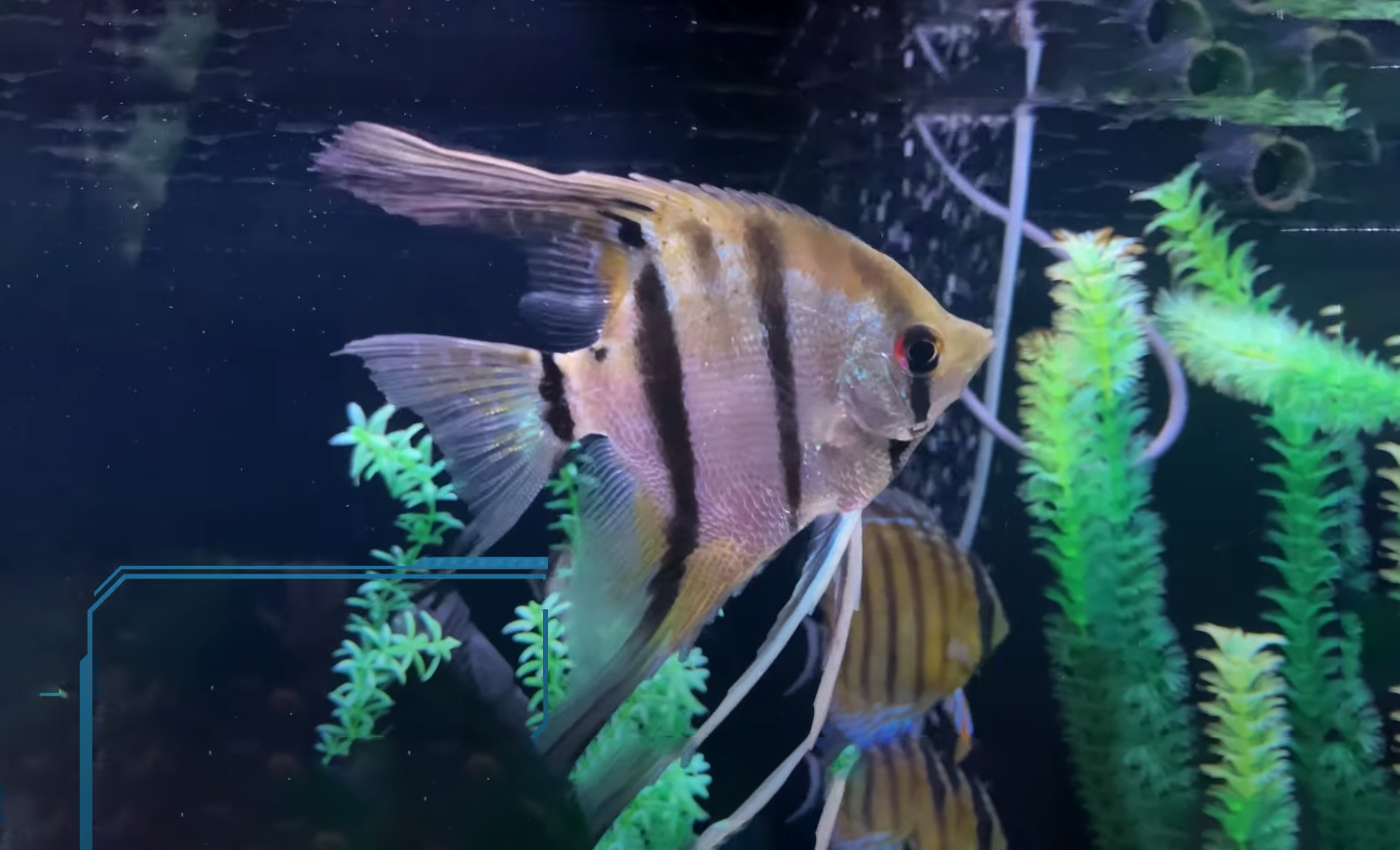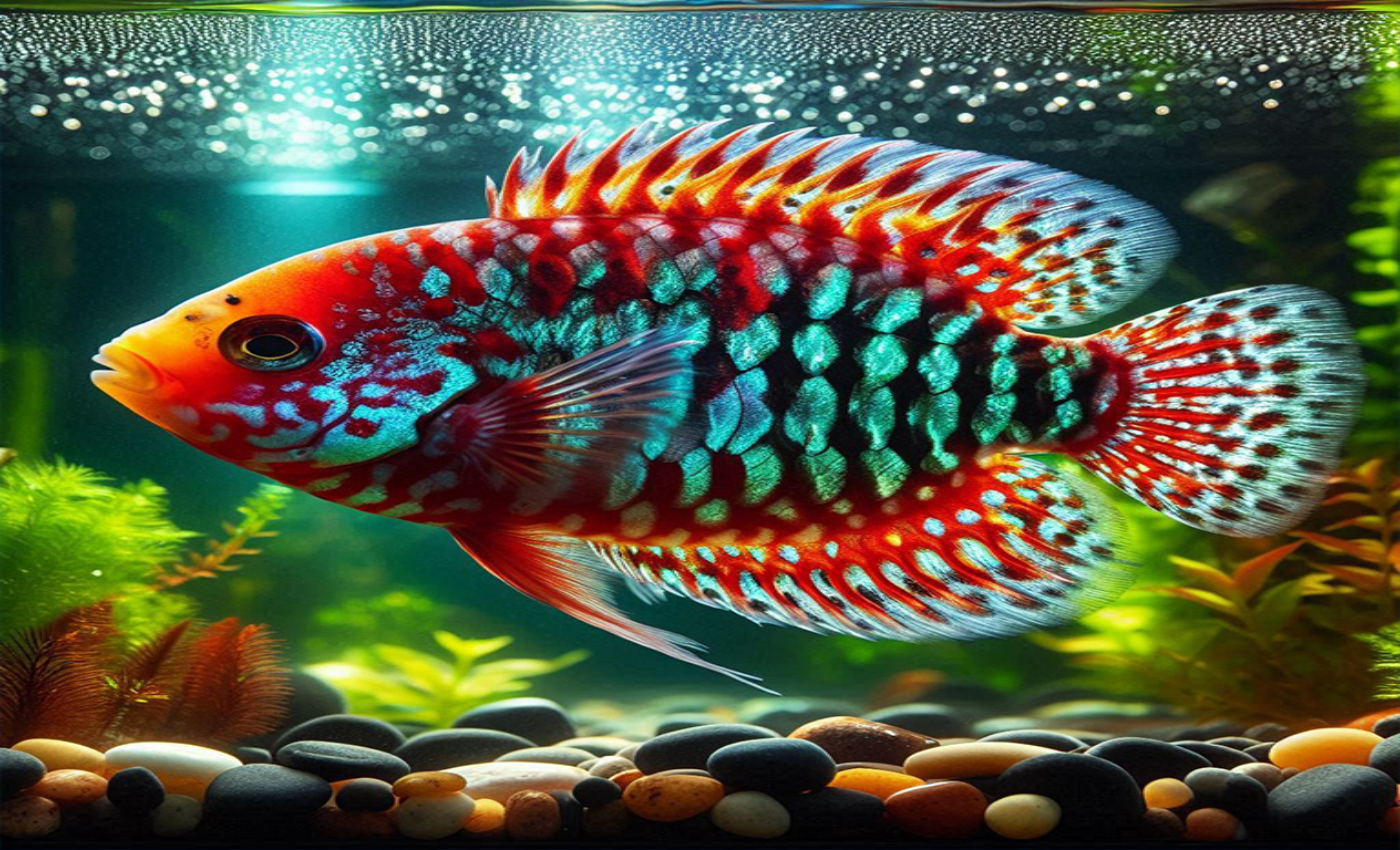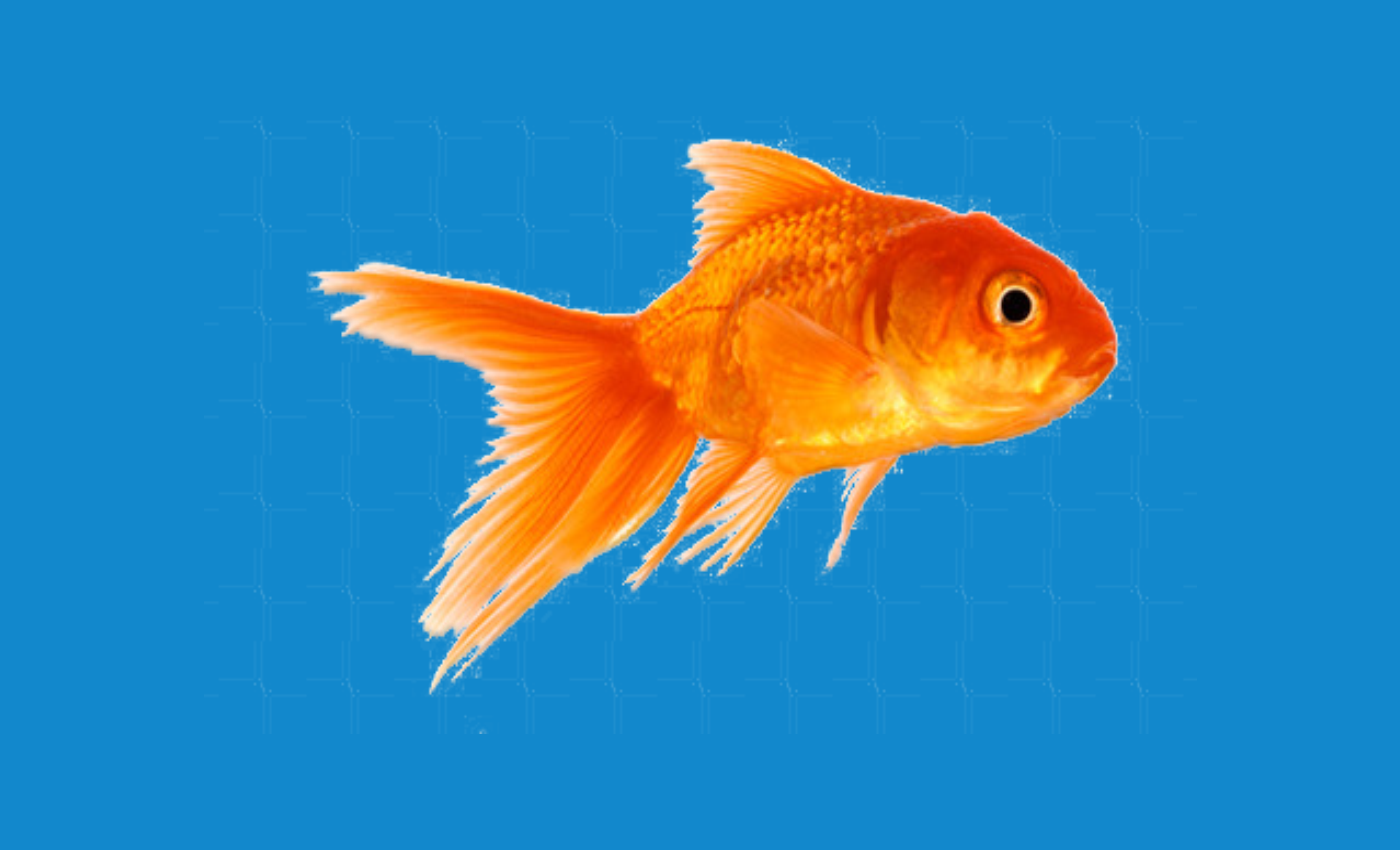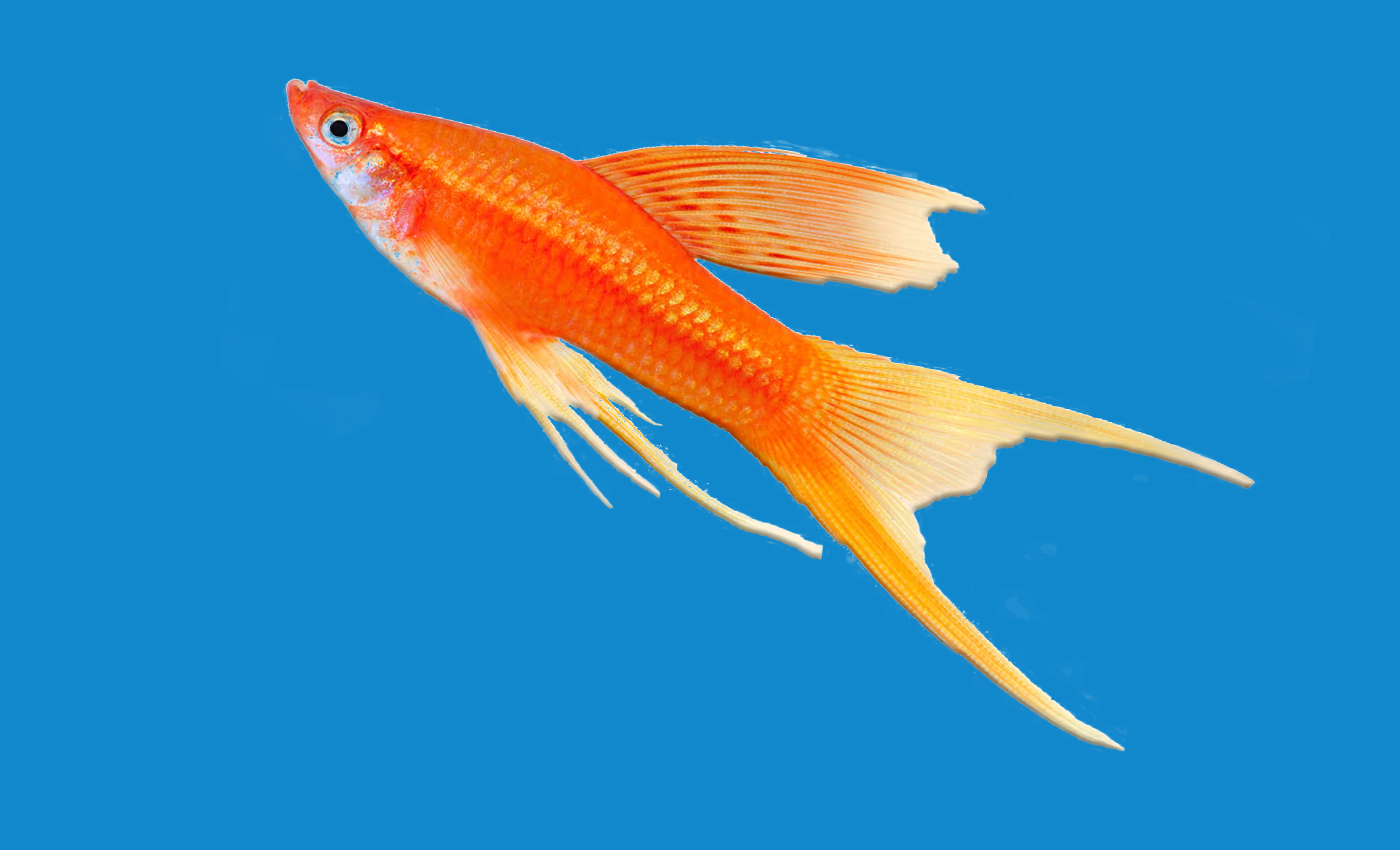Angelfish (Scalaria): Beautiful and Elegant Freshwater Fish

Angelfish, scientifically known as Pterophyllum, are revered for their graceful appearance and distinctive shape. These fish, often referred to as Scalaria in some regions, are popular among aquarists for their striking colors and elegant fins. Let’s delve into the world of Angelfish to understand more about their care, characteristics, and requirements in the aquarium.
Overview
Angelfish are native to South America, particularly the Amazon River basin and its tributaries. They belong to the Cichlidae family and are known for their laterally compressed bodies, elongated fins, and triangular-shaped appearance. These fish are prized for their beauty and peaceful temperament, making them a sought-after addition to freshwater aquariums worldwide.
Characteristics
- Size: Angelfish can grow up to 12 centimeters (approximately 5 inches) in length, depending on their genetics and environment. Their vertical height, thanks to their dorsal and anal fins, can extend further, giving them a majestic presence in the aquarium.
- Coloration: They exhibit a range of colors, including silver, black, marble, and various shades of orange and yellow. Their unique patterns often include stripes or marbling, which adds to their allure. Some varieties, such as the veil and marble Angelfish, display particularly striking color combinations.
- Behavior: Angelfish are generally peaceful but can become territorial, especially during breeding or when establishing dominance. It’s advisable to provide them with ample space and suitable tank mates to prevent aggression.
Aquarium Setup
Tank Requirements
- Tank Size: Angelfish require a minimum tank size of 75 liters (20 gallons) for a pair or small group. Taller tanks are preferred due to their vertical swimming habits and extended fins. Provide ample swimming space and vertical height to accommodate their graceful movements.
- Water Parameters: Maintain a stable water temperature of around 24°C (75°F), with a pH range between 6.5 to 7.5. Angel-fish are sensitive to water quality, so regular water changes and filtration are essential to keep ammonia and nitrite levels low.
- Substrate and Decor: Use a fine gravel or sand substrate, as Angelfish enjoy sifting through the substrate in search of food. Incorporate live plants like Amazon swords or Java ferns to provide hiding spots and mimic their natural habitat. Driftwood and rock formations can also create visual barriers and territories.
Feeding
Angel-fish are omnivorous and enjoy a varied diet:
- Diet: Offer a balanced diet that includes high-quality flakes, pellets, frozen or live foods such as bloodworms, brine shrimp, and daphnia. Supplement their diet with vegetable matter like blanched spinach or cucumber slices to promote digestion and overall health.
- Feeding Behavior: Angelfish are mid to top-level feeders and may also forage along the bottom of the tank. Feed them small portions multiple times a day to prevent overfeeding and maintain water quality.
Cost and Availability
Angelfish are readily available in pet stores and online retailers:
- Cost: Prices for Angel-fish typically start from 300 rubles (approximately $4) per fish, depending on the color variety and size. Specialty varieties, such as marble or veil Angelfish, may be priced higher due to their unique color patterns and rarity.
Maintenance Tips
Water Quality and Tank Mates
Maintaining optimal conditions is crucial for the health of Ange-lfish:
- Water Quality: Monitor and maintain stable water parameters to ensure their well-being. Use a reliable filtration system and perform regular water tests and changes to prevent fluctuations in water chemistry.
- Tank Mates: Choose tank mates that are compatible with Angelfish, such as tetras, rasboras, Corydoras catfish, and other peaceful community fish. Avoid aggressive or fin-nipping species that may stress or harm Angelfish.
FAQs about Angelfish
1. Are Angelfish suitable for beginner aquarists?
Yes, Angelfish are recommended for beginner aquarists due to their hardiness and adaptability to a range of water conditions. However, understanding their specific care requirements, including tank size and water quality, is essential for their long-term health.
2. How many Angelfish can be kept together?
Angelfish can be kept in pairs or small groups, preferably with a ratio of one male to several females to reduce aggression. Provide adequate space and visual barriers to minimize territorial disputes.
3. What is the lifespan of Angelfish?
With proper care, Angelfish can live up to 10 years or more in captivity. Providing a stable environment, balanced diet, and suitable tank mates contribute to their longevity.
4. Can Angelfish breed in home aquariums?
Yes, Angelfish are known to breed in aquariums under suitable conditions. Provide tall plants or flat surfaces like broad leaves for them to lay eggs. Separate the breeding pair after spawning to protect the eggs and fry from other tank mates.
5. Do Angel-fish need a heater in their tank?
Yes, Angel-fish require a stable water temperature around 24°C (75°F). Use a reliable aquarium heater to maintain consistent temperature levels, especially in cooler environments or during seasonal changes.
6. What should I feed Angelfish?
Feed Angel-fish a varied diet of flakes, pellets, and live or frozen foods. Include protein-rich foods like bloodworms and brine shrimp, as well as vegetable matter to ensure their nutritional needs are met.
7. Are Angelfish prone to diseases?
Like all fish, Angelfish can be susceptible to common aquarium diseases such as ich (white spot disease) and fin rot. Maintain good water quality, quarantine new fish before introducing them to the main tank, and observe their behavior regularly for signs of illness.
Conclusion
Angelfish, known for their beauty, grace, and peaceful temperament, are a prized addition to freshwater aquariums. By understanding their specific care requirements, providing a suitable environment, and offering a balanced diet, aquarists can enjoy the elegance and charm that Angel-fish bring to their aquatic setups.



Post Comment